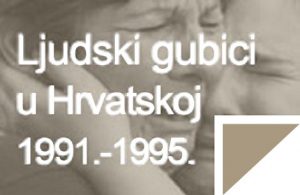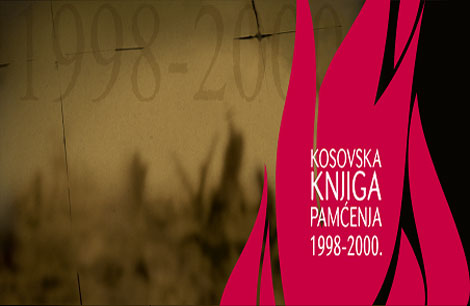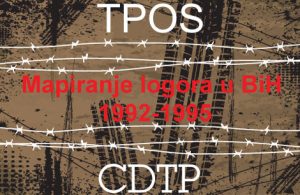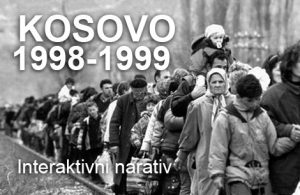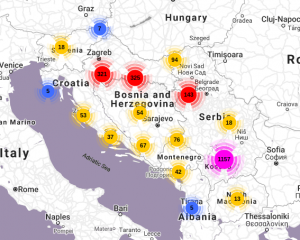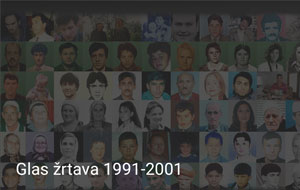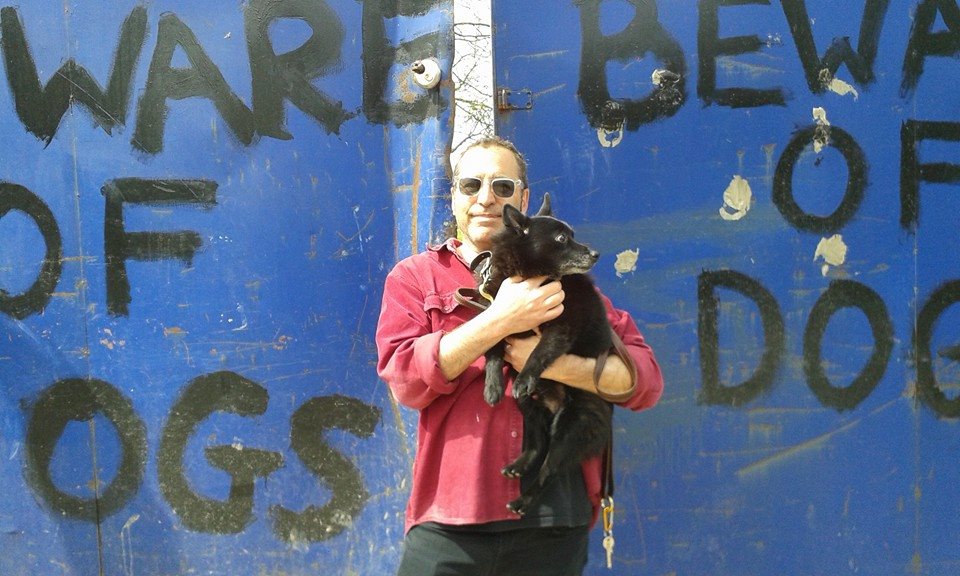
06.10.2015.
Southeast European states, the EU, and “reconciliation”
There should not be much difficulty in concluding that however much agreements among competing political elites may be necessary, and have the potential to contribute to reconciliation, they do not by themselves constitute “reconciliation.” This is a far broader process with inflections at the institutional, social and cultural levels
By Eric Gordy
There can be little doubt that the Serbian government has been gaining political capital internationally for two reasons: its relatively favourable disposition toward refugees arriving in the country, and its periodic willingness to reach agreements with the government of Kosovo. Anybody not occupying some portion of the political extremes would be likely to agree that praise on these points is deserved. But it is interesting to note some ways in which the government’s position has been overinterpreted. Speaking after a meeting with prime minister Aleksandar Vučić, for example, EU enlargement commissioner Johannes Hahn put the government’s position in the context of reconciliation, and promised an according reward. He said:
“The actions of reconciliation by prime minister Vučić and the Serbian government toward its neighbours, and the continuation of high-level dialogue with Kosovo, are the best examples. If we take everything together, I am persuaded that we are on a good path to open the first negotiation chapters before the end of this year.”
Vučić responded with a statement claiming credit across a wider universe of activity, and placing emphasis on the reward that Hahn had promised:
“We consider that we have in the recent period in every part, or in most parts of various spheres of social life behaved in a good and serious way, and that we have earned the opening of the negotiation chapters before the end of the year.” [1]
The part of this exchange most worth concentrating on is the association of cooperative political behaviour with “reconciliation,” and the consequences that are anticipated. If we were to express it schematically it would look like this:
- Reconciliation is displayed by “good behaviour”
- “Good behaviour” is exemplified by a) a cooperative posture in relation to international institutions, and b) a willingness to make agreements with political elites in neighbouring states
- The motivation for “good behaviour” is a material reward, in this case advancement of the process of integration with international institutions
It might be possible to say that all of these propositions are true, and even that none of the propositions are objectionable. The only reason one might be critical of Mr Hahn’s implied definition of “reconciliation” is that it is overly narrow and incomplete. The suggestion appears to be that reconciliation happens when political elites reach agreements that reduce the probability of future hostility.
But of course, it is easy to see that agreements among elites by themselves do not reduce the probability of hostility much. This is apparent in the occasional escalations of nationally based rhetoric that have come to constitute most of political life in Bosnia and Herzegovina, particularly in the area of relations between Republika Srpska and the institutions of the state. It is apparent in the way that a dispute between Serbia and Croatia over the travel paths of refugees quickly escalated into economic sanctions and a border blockade, with the prime ministers of both states now openly telling media that they have no desire to speak to one another. There are two principal reasons for this: one is that political elites who mutually defuse tensions are equally capable of mutually aggravating them, and the other is that agreements among elites leave the background element of general public dissatisfaction unaddressed.
So there should not be much difficulty in concluding that however much agreements among competing political elites may be necessary, and have the potential to contribute to reconciliation, they do not by themselves constitute “reconciliation.” This is a far broader process with inflections at the institutional, social and cultural levels, which involves generating and sharing an understanding of conflict in the past, recognition of responsibility and action consistent with this recognition, understanding of concerns and grievances originating from different publics, and positive activity to address needs arising from the experience of conflict and violence.
This broader understanding can also be stated in a schematic way. Reconciliation involves (at least) the following five levels:
- Reconciliation involves communication among institutions. This sort of communication includes the sorts of agreements that Hahn and Vučić were right to affirm. It also includes the kind of activity that, for a period, leaders in the region engaged partially and haltingly, such as apologies and public declarations of established facts. Agreements like the ones between Serbia and Kosovo to normalise relations, or like the visit of the members of the Bosnian presidency to Belgrade to dramatise the existence of relations, are important and necessary. But reconciliation at the institutional level requires clear statements originating from the top levels of institutions that a shared commitment exists. All kinds of formal peace can be declared which, absent an expression of political will, do not amount to reconciliation.
- Reconciliation involves communication within institutions. Only institutions that have cleared out their ranks, improved their procedures, and come forward with accounts of institutional responsibility and commitments to a new institutional purpose are prepared to move forward with reconciliation. This applies across the entire institutional sphere, but most crucially to the institutions that play the largest role both in producing guilt from the past and in overcoming it: military, security and judicial institutions. Within these institutions it is an absolute requirement that people who committed violations should be reprimanded or removed from their functions, that personnel receive instruction and training in preventing and avoiding violations, and that institutions emerge with clear collective accounts of their past activity and future purpose. Continuing controversy over the wartime activity of figures like Ljubiša Diković and Goran Radosavljević suggest that institutions have not adopted new roles suited to the activity of reconciliation.
- Reconciliation involves communication between institutions and the public. The governments of the region can point to many gestures they have made in compliance with conditionality imposed by outside factors: providing indictees and documents to an international tribunal, establishing special courts and prosecutors, and development of cooperative cross-border activity in investigation and law enforcement. At the same time public officials have spoken about this activity publicly, when at all, in only the vaguest terms. At the same time, media, educational, political and religious institutions have largely maintained the overall tone of ethnonational exclusivity and resentment that was dominant during the period of conflict. Gestures of compliance are necessary, but in order for them to contribute meaningfully to reconciliation it is necessary for members of the public to be told what is being done, why it is being done, and how it is distinct from what was done in the past. By itself, conditionality and compliance construct an atmosphere of communication restricted to political elites, which leaves public dialogue unchanged.
- Reconciliation involves communication among differing publics. Not all reconciliation activity takes place on the level of institutions. A central element, and one of the goals of reconciliation, involves members of publics who had previously been encouraged to denigrate and oppose one another to exchange experiences and understandings and to develop common memories and a capacity to recognise one another. This is encouraged by free communication and travel, and involves the activity of civic, educational, religious, media and cultural institutions. The principal contribution of institutions is to maintain an atmosphere of openness and tolerance. It seems apparent that while the whole region has seen an impressive number of initiatives designed to encourage this type of communication, this has occurred in spite of, rather than in concert with, the engagement of the institutions that have the capacity to make the greatest contribution.
- Reconciliation involves concrete activity involving the public of fact-finding, restitution and retribution. Basic facts regarding the violence of the 1990s remain, in surprising measure, unknown. Ongoing disputes regarding the number of victims, the disposition of missing persons, the structures of supply, command and control, and similar questions can be attributed partly to incomplete research into facts, and partly into the maintenance of claims of secrecy over useful information. The only possible basis for reconciliation is clarification and general knowledge of the fundamental facts of the conflict. In addition to this, the needs of people whose lives have been affected by violence must be addressed, through recognition and compensation. A crucial element of this is legal changes which affirm the existence and establish rights for civilian victims, a task that has remained undone. Among the needs of victims has to be counted the identification and prosecution of perpetrators – this is a task on which domestic legal institutions in the states of the region has done as little as possible to comply with international conditionality, and which represents a looming social need.
Observed from this broader interpretation of what is involved in reconciliation, it might be more reasonable to conclude that Serbia, and other states in the region as well, have not accomplished very much but very little. The principal reason for this may well be that the broad activity required for reconciliation, encompassing not only political but also social and cultural institutions, has largely been confined to a sector of political of institutions.
It might be the case that the EU, and Johannes Hahn speaking its name, are satisfied with a restricted range of progress in a restricted sphere. This narrow approach to reconciliation does not take into account the needs of the publics in the region. If we consider that one of the purposes of reconciliation is to contribute to human security by reducing the probability of future conflict, it probably does not take into account the needs of the EU either.
Author is professor, University College London, School of Slavonic and East European Studies
[1] Author’s translation of the statements from the Serbian news. See for example RTS report, September 25. 2015 http://www.rts.rs/page/stories/sr/story/9/Politika/2050195/Han%3A+Sloboda+kretanja+u+interesu+svih+zemalja+na+Zapadnom+Balkanu.html.
